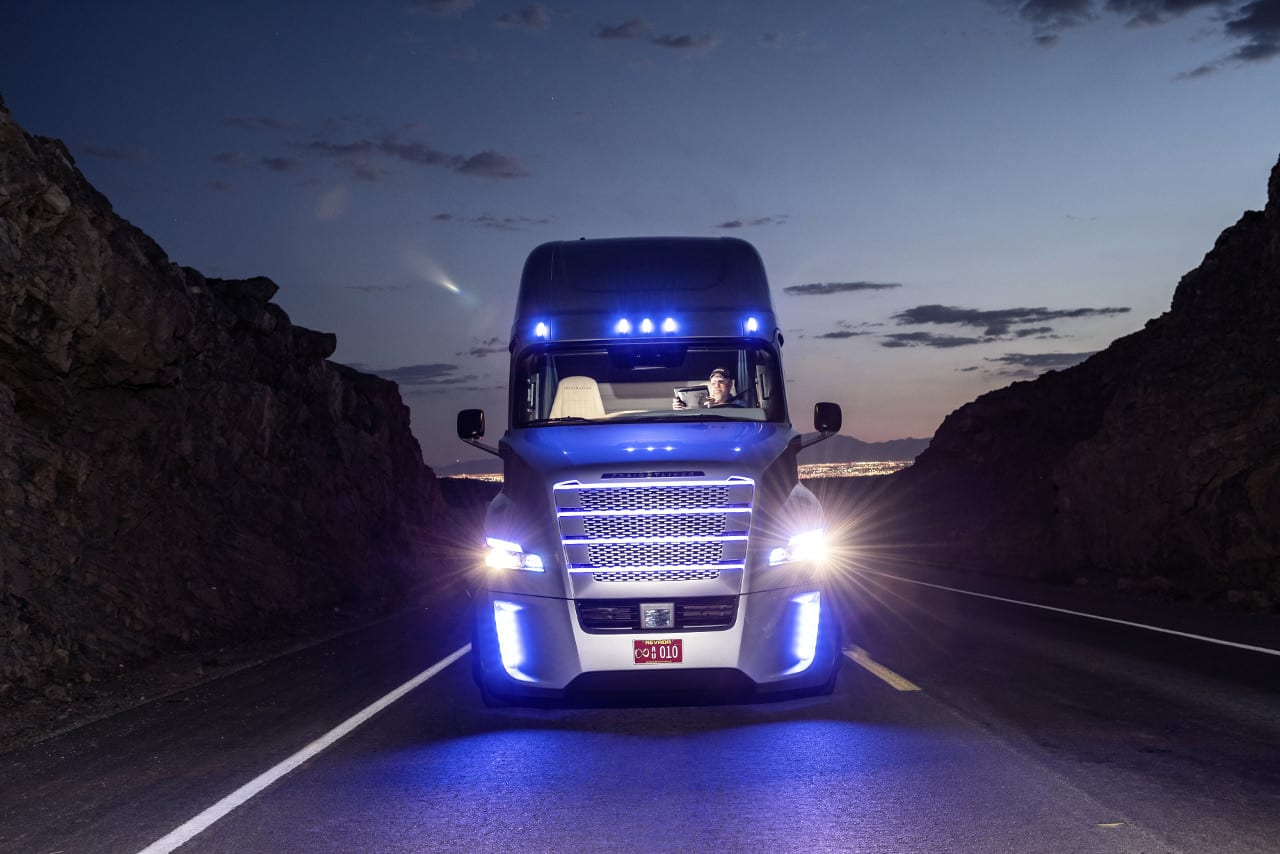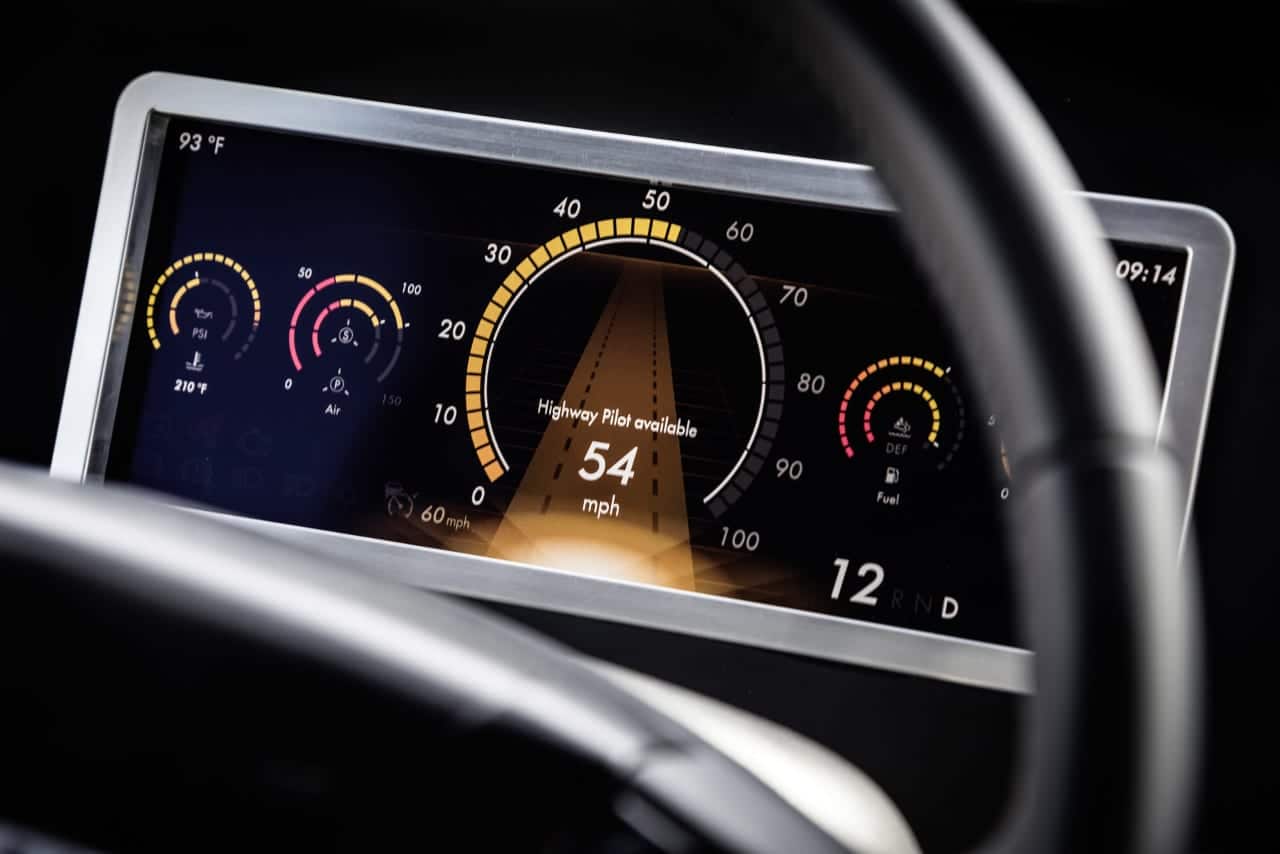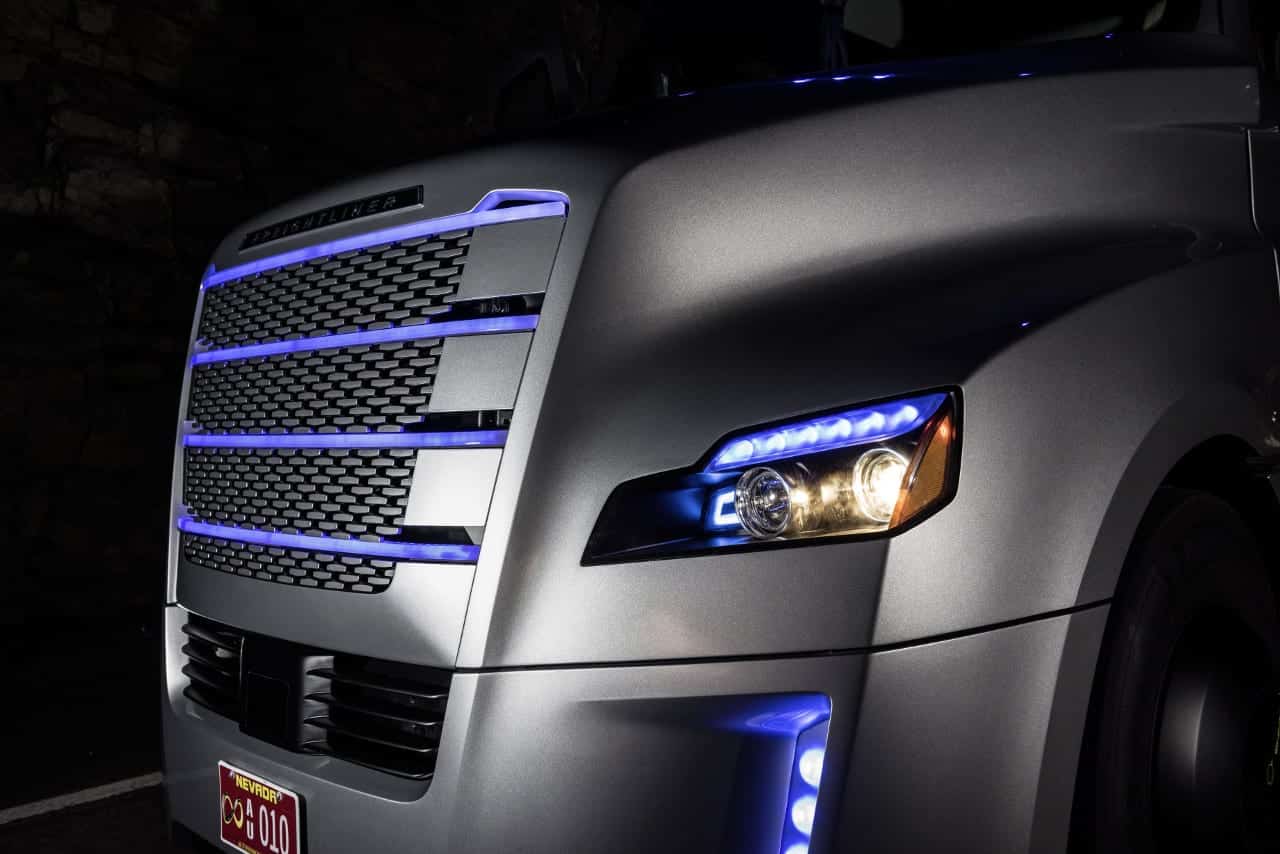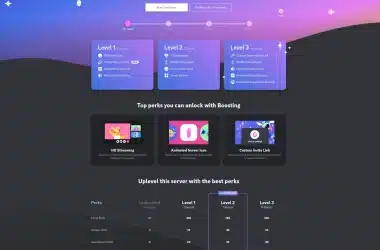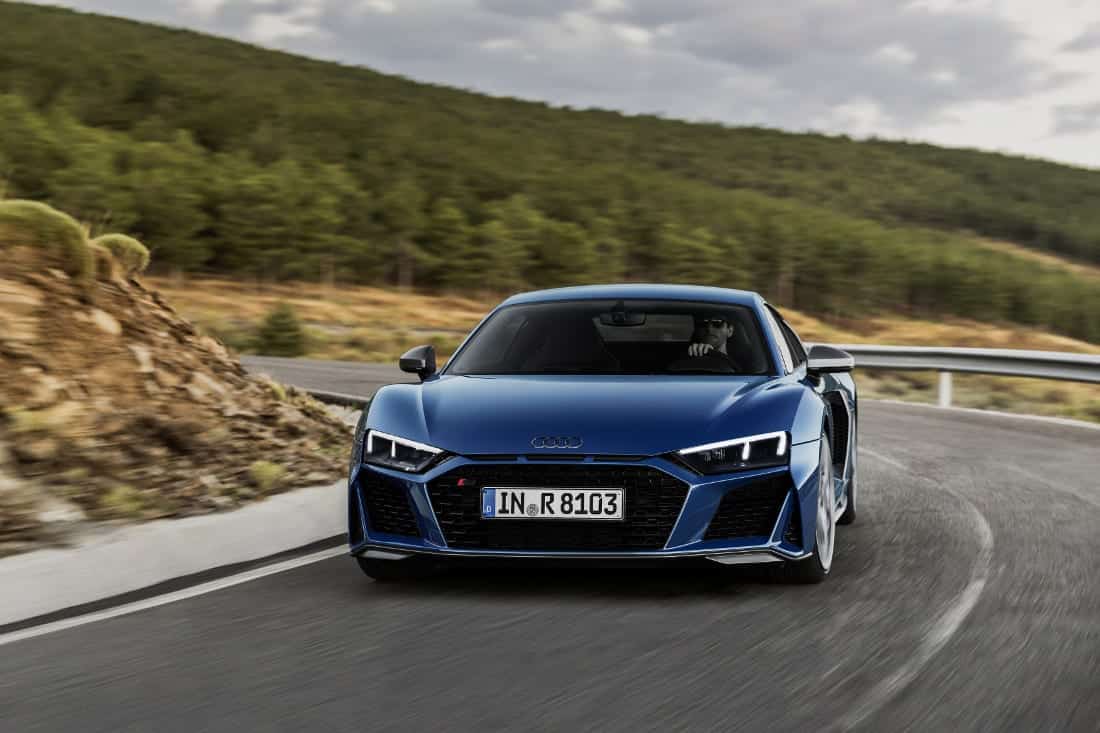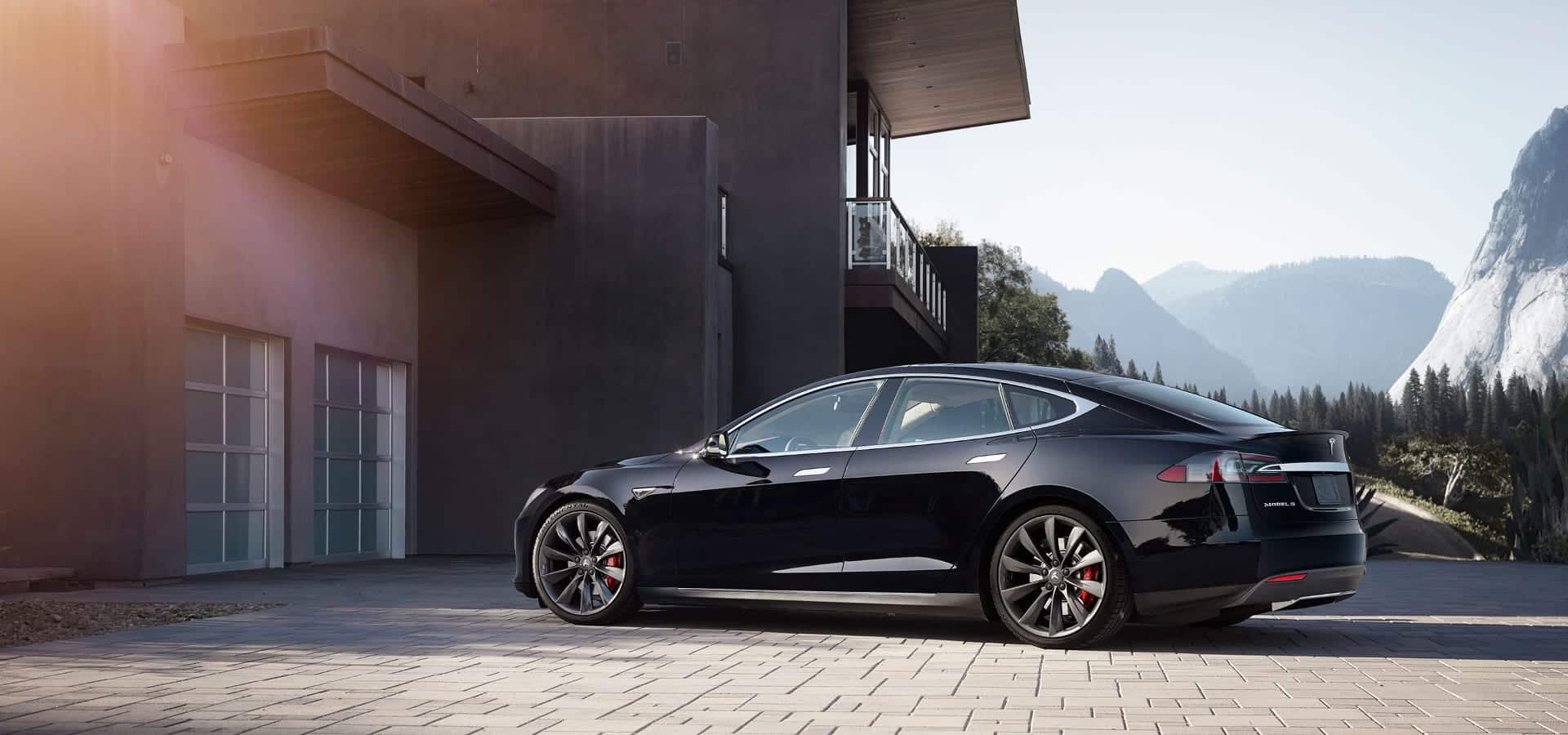Quite a few people are afraid of autonomous vehicles. They don’t trust them because electronics aren’t very smart, so for them, this news might be a bit unsettling (although exciting for me): the (virtually) autonomous Freightliner Inspiration 18-wheel truck has been issued a license to drive in Nevada. This isn’t a driverless vehicle per-se. There will be a driver monitoring the vehicle along the way, and it will do some of the driving for them.
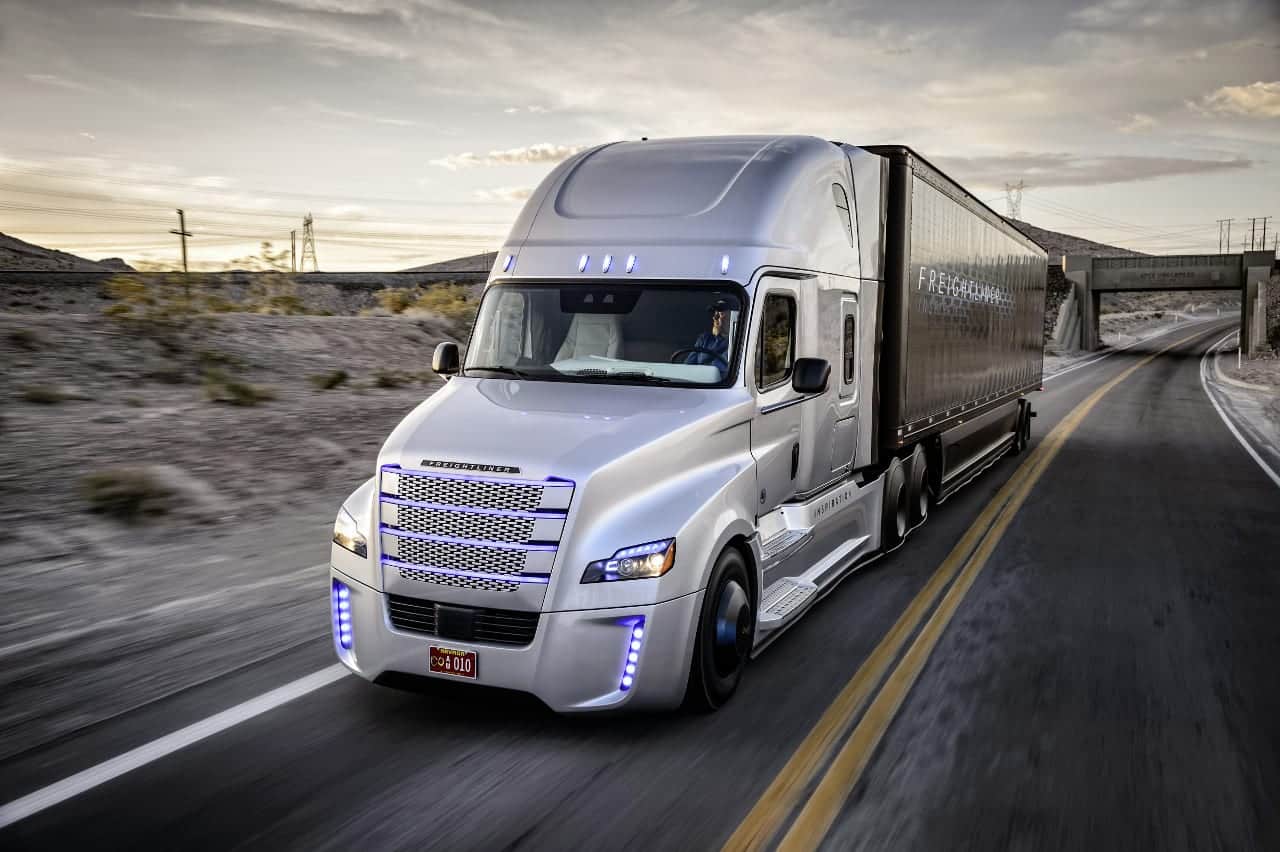
Image obtained with thanks from Daimler.
The Freightliner Inspiration works by monitoring its surroundings and regulating its speed to stay within speed limits, much like other autonomous vehicles. Once the truck is on a highway, the instrument panel notifies the driver that autonomous mode can now be activated. Daimler (Freightliner’s parent company) added:
A radar unit centered in the front bumper of the Freightliner Inspiration Truck monitors the road at close and long range. The long-range sensor goes out to about 820 feet (250 meters) at an aperture angle of 18 degrees and detects vehicles in a long and narrow area. The short-range sensor goes out to about 230 feet (70 meters) at an aperture angle of 130 degrees and detects vehicles in a wider area that could merge into the lane in front of the truck.
The front radar unit forms the basis for the Adaptive Cruise Control system and the Active Brake Assist system, which are already familiar from the Mercedes-Benz Actros and the Detroit Assurance™ series of safety systems in the series production model of the Freightliner Cascadia Evolution.
The area in front of the truck is also monitored by a stereo camera mounted above the dashboard on the inside of the windshield. The camera has a range of about 100 meters (328 feet) and aperture angles of 45 degrees horizontally and 27 degrees vertically. The camera recognizes pavement markings and communicates with the steering gear of the Highway Pilot system to keep the truck in its lane autonomously.
Potential benefits of partially autonomous trucks like the Freightliner Inspiration include the reduction of driver fatigue (possibly due to the fact that the driver can relax sometimes while the vehicle drives for them). Intuition tells me that applying autonomous driving technology to 18-wheel trucks before smaller cars (which are less accident-prone) sounds unwise, but then again: Which is safer? Human-driven or automated trucks?
Tractor trailer drivers drive the longest distances, for the longest periods of time, and they have to keep their hands on the wheel for ages as they drive hundreds of miles on highways. This is very fatiguing. To add insult to injury, tractor trailers are accident prone, and may contribute to other accidents on highways (remember all those shocking pileups you’ve seen). If trucks’ autonomous driving systems can work as well as those used in Google’s smaller autonomous cars, they could certainly be a success, as autonomous cars have exhibited excellent performance. For example: Google’s autonomous cars have been in 11 accidents over the course of 1.7 million miles.
Automotive accidents are frequently caused by characteristics that electronics don’t possess, such as impatience, a poor temper, inattention, and fatigue. This is likely the primary reason for Google’s success. Computers will follow the rules no matter what.





